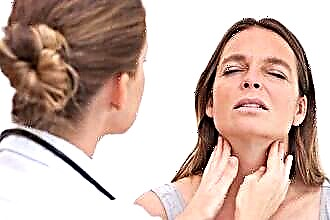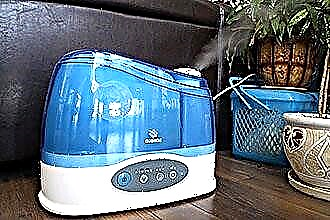Chronic otitis media is a sluggish inflammation in the middle ear, which is characterized by a periodic outflow of purulent exudate from the ear canal. Destruction of the tympanic membrane leads to the rapid development of conductive hearing loss and autophony. It is almost impossible to restore hearing acuity in case of an untimely visit to a doctor.
In 90% of cases, chronic otitis media develops from acute inflammation that has not been properly treated. In other cases, pathology arises as a complication of scarlet fever otitis media, recurrent eustachitis or tubo-otitis. Untimely elimination of purulent foci in the ear leads to the appearance of labyrinthitis, mastoiditis and other serious pathologies.
Etiology of the disease

The main reason for the development of chronic otitis media is an infection, the causative agents of which can be gram-positive and gram-negative bacteria or fungi. Pathogenic microorganisms directly affect the ear canal or the nasopharynx, from where they enter the ear cavity through the Eustachian tube. The pathogens that provoke the development of ENT disease include:
- klebsiella;
- staphylococcus;
- Pneumococcus;
- Proteus;
- haemophilus influenzae;
- rhinoviruses.
The ear and nasal passages are interconnected, so any inflammatory processes in the nasopharynx can lead to the development of ear disease. For this reason, approximately 80% of children suffer from otitis media in early childhood.
The following can provoke the reproduction of pathogenic flora in the ear cavity:
- reduced reactivity of the body;
- infectious diseases;
- trauma to the skull and nose;
- deficiency of vitamins and minerals;
- pathology of the ear and nasal septum.
In infants, the disease most often develops against the background of a general infectious disease. Due to the weakened defense of the body, opportunistic bacteria develop rapidly, provoking intoxication. This leads to the appearance of foci of inflammation in the nasopharynx, where pathogens are localized. They easily penetrate the Eustachian tube, which leads to infection of the mucous membrane of the ear cavity.
Symptomatic picture
 With the development of chronic inflammation in the tympanic membrane, persistent perforations appear, which do not heal for a long time. Purulent masses arising in the ear cavity worsen the trophism of tissues and contribute to their degradation. In this regard, the following symptoms of chronic otitis media occur in adults:
With the development of chronic inflammation in the tympanic membrane, persistent perforations appear, which do not heal for a long time. Purulent masses arising in the ear cavity worsen the trophism of tissues and contribute to their degradation. In this regard, the following symptoms of chronic otitis media occur in adults:
- feeling of stuffiness. Due to the accumulation of purulent exudate inside the ear, severe discomfort is felt, caused by a sensation of fluid transfusion in the middle ear;
- noise in ears. The development of auditory dysfunction associated with impaired conduction of the sound signal to the auditory bones leads to the appearance of tinnitus. Patients complain of autophony, which is characterized by the resonance of their own voice in the ear cavity;
- painful sensations. During periods of exacerbation of the disease, acute catarrhal processes occur in the tissues, as a result of which the melting of the mucous membranes is observed. Pathological changes in the structures of the ear lead to the appearance of "shooting" pain;
- dizziness. The destruction of the auditory ossicles, coupled with the defeat of the semicircular canals in the ear labyrinth, becomes the cause of malfunctions in the vestibular apparatus, which is expressed in spatial disorientation;
- purulent discharge. As a result of the vital activity of bacteria in the tympanic cavity, purulent masses with an unpleasant odor appear, which are periodically evacuated into the external auditory canal.
Signs of otitis media in children
The common clinical manifestations of ENT disease in children include hyperthermia, chills, lack of appetite and moodiness.
Inflammatory processes in the ear cavity lead to the appearance of perforated holes in the membrane, as a result of which suppuration begins.
Due to a general deterioration in well-being and inflammation of the mucous membrane of the tympanic cavity, the classic symptoms of chronic otitis media will be:
- discharge of purulent exudate;
- tinnitus;
- gradual hearing loss;
- aching and shooting pains in the ear;
- swelling of the external auditory canal;
- enlargement of the parotid lymph nodes.

If the pathology is not diagnosed in time and therapy is not started, the foci of inflammation can spread to healthy tissues. As a result, ear pain can radiate to the teeth, neck, temple, or bridge of the nose. Against the background of a general weakening of immunity, fungal flora (otomycosis) often joins the bacterial infection. An allergic reaction to the metabolites of pathogens causes itching and eczematous eruptions in the auricle.
Important! The progression of the disease leads to damage to the bone capsule located in the inner ear. This can lead to the development of labyrinthitis or meningitis.
Forms of chronic otitis media
How to cure chronic otitis media? The principles of treatment of ear pathology are determined by the localization of inflammatory processes in the ear, as well as the type of perforation of the ear membrane. In this regard, several forms of the disease are distinguished, namely:
- mesotympanic - central perforation with the formation of a perforated hole in the very center of the ear membrane. Recurrent inflammation that occurs with acute respiratory infections leads to the appearance of polyps. Their growth contributes to the blockage of the ear canal, which is fraught with the development of stenosis;
- epitympanic - marginal perforation with perforation in the upper section of the membrane. The destruction of the tissues of the mucous membranes and the ear membrane leads to the appearance of tumor-like neoplasms (cholesteatoma). With the progression of the disease, conductive hearing loss and autophony develop;
- epimesotympanic - mixed perforation, characterized by the appearance of perforated holes in both parts of the ear membrane.
Cholesteatomas provoke the destruction of the bone tissue of the mastoid process, which leads to the development of mastoiditis, therefore, when diagnosing epitimpal otitis media, treatment should be started immediately.
Treatment features
The principles of treatment of chronic otitis media in adults and children differ only in the type of pharmacotherapy used. However, drug treatment plays a secondary role in the relief of the main manifestations of ear pathology. To eliminate purulent of discharge from the ear, sanitizing operations are used, which improve the outflow of purulent exudate from the ear cavity.
of discharge from the ear, sanitizing operations are used, which improve the outflow of purulent exudate from the ear cavity.
For the treatment of chronic otitis media, the following methods of complex therapy can be used:
- tympanostomy - drainage of the ear cavity by inserting special tubes into the auditory canal;
- tympanoplasty - an operation that removes perforations in the tympanic membrane;
- phonophoresis is an absorbable physiotherapeutic procedure that helps to eliminate exudate from the middle ear;
- antibiotic therapy - kills pathogenic bacteria in the ear cavity, which helps to stop inflammatory processes.
At the initial stages of development of ear pathology, specialists prescribe conservative treatment with the use of antiseptic, anti-edematous and antiphlogistic medications. In the absence of positive dynamics, anthrodrainage is assigned, i.e. surgical treatment followed by sanitation of the ear cavity with medicinal solutions.
Pediatric therapy
ENT disease in infants can be triggered by an allergic reaction to complementary foods or breast milk.Therefore, pediatricians recommend that nursing mothers follow a special hypoallergenic diet, which would reduce the risk of developing allergic otitis media. It is worth considering that antibiotic therapy is contraindicated for children under the age of 2-3 years, due to the low reactivity of the immune system. However, for the treatment of chronic otitis media complicated by labyrinthitis or mastoiditis, antibiotics of the penicillin or cephalosporin series can be used.
In children under 2 years of age, the eardrum is much stronger and thicker than in adults. Therefore, even with the accumulation of a large amount of pus in the ear, its integrity is not always violated, which leads to the ingress of purulent masses into the inner ear, and not into the external auditory canal. To prevent the development of labyrinthitis, meningitis and brain abscess, the ear membrane is punctured (paracentesis), which helps to evacuate pus out.
Drug overview
How is chronic otitis media treated? As part of a comprehensive treatment, pharmacotherapy can be used to relieve catarrhal processes during an exacerbation of the disease. They help to destroy pathogens, relieve puffiness and accelerate tissue regeneration processes:
tissue regeneration processes:
- ear drops ("Otinum", "Otizol") - eliminate pain in case of perforation of the ear membrane, prevent infection from entering the middle ear;
- systemic antibiotics ("Flemoxin", "Axetin") - inhibit the activity of the bacterial flora, which leads to the elimination of foci of inflammation;
- corticosteroids ("Candibiotic," Sofradex ") - eliminate inflammation and edema from the mucous membranes of the ear cavity and the Eustachian tube;
- antiseptics ("Miramistin", "Burov's liquid") - kill pathogens in the foci of inflammation, which accelerates tissue regeneration.
The treatment regimen for chronic otitis media depends on the stage of development of inflammatory processes and the prevalence of lesions. Self-medication can cause hearing loss, deafness, and more serious complications.




